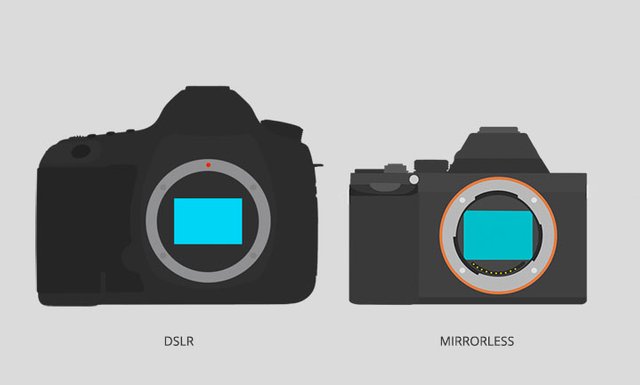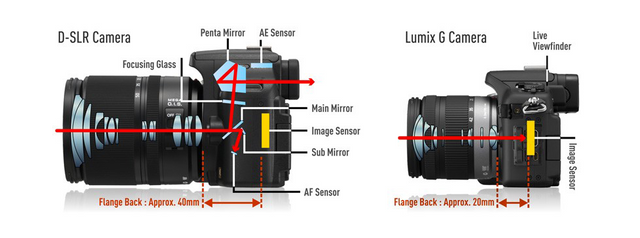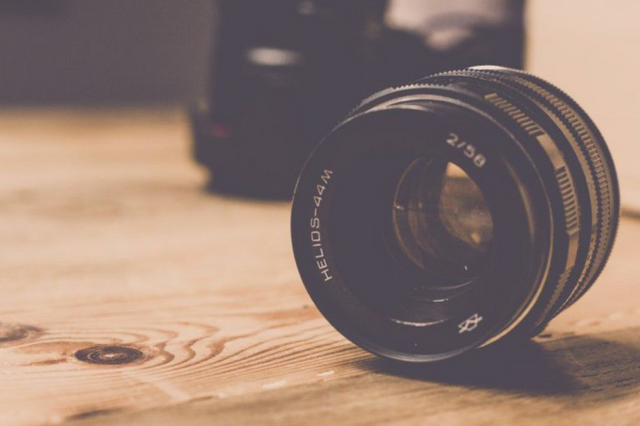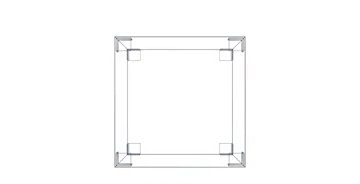Mirrorless Vs DSLR - 7 Key Factors To Consider Before Your Next Purchase
Mirrorless or DSLR?
The other day I was chatting to a fellow Steemian who was in the market for a new camera and we started discussing the pros and cons of mirrorless tech. I felt other photographers out there might want some answers as well so I’ve put this article together for you.
When taking the next step in photography, you’ll usually want to upgrade to a better camera than the one on your smart phone or compact point and shoot style camera. Digital Single Lens Reflector (DSLR) cameras have been the core element for amateur and professional photographers alike for at least the last two decades. With the advent of mirrorless cameras, we have done away with one of the bulkiest components of the DSLR.. the mirror. Instead of reflecting what the sensor would see to the view finder, the mirrorless camera sensor directly feeds the picture to an electronic view finder (EVF). New generation mirrorless cameras have full frame sensors. This is one of the main reasons it has generated greater interest in the professional community. The other key difference is that the autofocus system in a DSLR is performed by a seperate dedicated module. In mirrorless cameras, this is done through their imaging sensor.
Mirrorless cameras offer some advantages at a cost of some disadvantages. With that in mind, here are some key points to consider before your next purchase.

Size
As a travel photographer, I have very limited real estate. I don't have the luxury of putting everything into the back of a van with a crew to help carry my gear around. It's just me and my backpack. Removing the mirror mechanism has left mirrorless cameras much smaller than their DSLR rivals. This is especially true of those mirrorless cameras with a crop sensor where the lens tends to be more compact. With most full frame mirrorless cameras the body may be smaller, however, you'll find that the lens will still be similar in size to DSLR lenses (particularly if you’re looking for a fast lens). When mounting a large lens onto a small body, you may find there’s potential for it to feel unbalanced.
Battery Life
Mirrorless cameras deliver less battery life than most DSLRs. With reduction in body size comes a similar reduction in battery capacity. The electronic view finder also takes up a fair bit of juice. For this reason, most professional mirrorless cameras come standard with at least 2 batteries to compensate. An easy fix, but a heads up that you’ll probably need to take a spare with you.

Autofocus
This ones tricky. There’s an argument for DSLR cameras because it has a dedicated module for autofocus. Many believe it’s superior to mirrorless cameras. But like all things, technology has a way of catching up. Sony’s fast hybrid autofocus system encompasses both phase detection and contrast detection. In some cases this has resulted in faster autofocus speeds and better autofocus in low light conditions. Others seemed to have experienced slower and sometimes inaccurate autofocus all together. If you’re someone that shoots relatively stationary subjects in adequate light, both cameras perform well. In the extremes of a moving subject and low light conditions this is still out for debate and there doesn’t seem to be a clear answer.

Lens
It use to be one of the biggest turn offs from mirrorless cameras. Manufacturers often had a very limited set of lenses available. Due to the ever growing popularity of mirrorless cameras, there has also been a growing market for its lenses. If you’re going for a Sony and don’t like the expensive line up of lenses, there’s an alternative. A third party adapter can open up a world of possibilities. An example would be the Sigma MC-11 Adapter. This allows for any lens with a canon mount to be fitted on a Sony Camera. It does involve actually buying the adapter which can be costly but if you already own a series of canon lenses, this may save you a lot of money.
View Finder
The DSLR uses the natural light that passes through all the way to the optical view finder using a prism. This gives a natural feel to what you’re seeing. The electronic view finder on a mirrorless camera displays exactly what the sensor sees and how it see’s it. People use to complain about the EVF system with issues of lag and refresh rates. More recently the tech has improved the refresh rate to the point you can barely tell the difference. The EVF also has the ability to display information such as the live image histogram. It also is able to display a digital simulation of what the image would look like (e.g. really washed out white if you had your iso up too high or shutter speed too slow). I love this feature, and I think if you’re still finding your feet with manual controls, this will certainly give you the confidence to keep playing around with them.
Economy
If you’re on a budget, you’ll probably get more for your money in a DSLR. For a cheap DSLR camera, you seem to get more features than a similarly priced Mirrorless camera.. For now.. As time goes on, this gap will get smaller.
Image Quality
It’s a myth that mirrorless cameras produce worse images than their DSLR siblings. There’s not a great deal of difference here. Top of the line DSLR sensors are very similar to Mirrorless cameras these days. If you were going by just resolution, the highest resolution DSLR camera houses a 50MP chip in the Canon 5D but the Sony A7R Mark II’s 42.5MP isn’t far off.
Overall Impression
DSLR cameras appear to be good value cameras that offer versatility of lenses and a decent battery life. Mirrorless cameras offer a smaller body with technically more advanced features. I don’t think there’s a right or wrong choice. It’s just down to personal preference. I hope this article helps you in trying to decipher what elements of each camera are important to you. At the end of the day it’s about getting the equipment thats right for you and your style of shooting.
One of my friends is a pretty big bloke. He wouldn't ever buy a mirrorless camera purely because his hands are too big. Probably end up crushing it trying to find the shutter button. If it were up to him, he'd build his own camera out of an old canon scanner and a microwave oven. So although mirrorless cameras work for me, it may not be the best choice for others *cough* Josh.

If you enjoyed this post, be sure to UpVote, Resteem and Follow me @lenscape especially if you're into travel, photography and reading words online.

This post received a 0.8% upvote from @randowhale thanks to @lenscape! For more information, click here!
Thanks for the share i'll print this. I want to buy a camera myself so thanks for the information!
Glad to help, I know this ones a common question in the community
very helpful article, we are on the same mission here! Good luck :)
Thanks! Had a read of your FAQ, great stuff! looking forward to more of your posts
Hello from me! I'm a none professional photographer and I read a lot about cameras and photography. This post is amazing- it gives I think the whole information for the choice between mirorless or DSLR. I didn't have the chance to take photos with mirorless camera, but I'm super into it if there is one. I have DSLR camera- Nikon D600, but I'm curious what it will be with a Olympus or Sony mirorless one. Greetings!
Yeah, it's been a bit of a blur between pro cameras both DSLR and Mirrorless and it just makes buying one that much harder. If you are planning on a purchase, be sure to check with the store if you can use it yourself for at least a day to get a feel for its pros and cons first. Unfortunately sometimes the cons only show up after you've unpacked the box.
Congratulations @lenscape! You have completed some achievement on Steemit and have been rewarded with new badge(s) :
Click on any badge to view your own Board of Honnor on SteemitBoard.
For more information about SteemitBoard, click here
If you no longer want to receive notifications, reply to this comment with the word
STOPBy upvoting this notification, you can help all Steemit users. Learn how here!